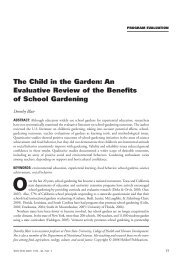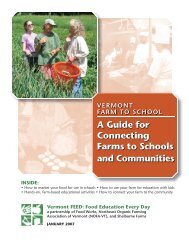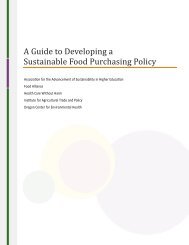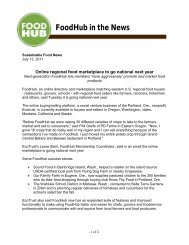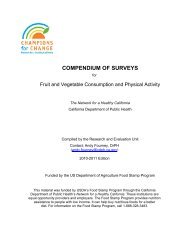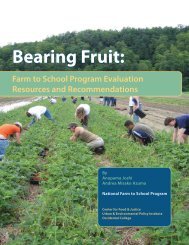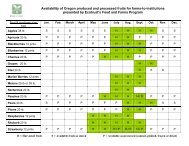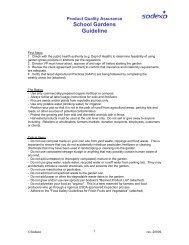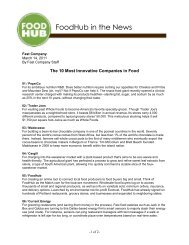Marketing Michigan Products to Schools: A Step-By-Step Guide
Marketing Michigan Products to Schools: A Step-By-Step Guide
Marketing Michigan Products to Schools: A Step-By-Step Guide
- No tags were found...
You also want an ePaper? Increase the reach of your titles
YUMPU automatically turns print PDFs into web optimized ePapers that Google loves.
National School Lunch Program (Contiguous States)July 1, 2009 – June 30, 2010 10Less than 60 % 60% or more Commodity entitlementPaid $0.25 $0.27Reduced-price $2.28 $2.30$0.1950Free $2.68 $2.70<strong>Schools</strong> receive federal reimbursement for each paid, reduced-price, and free lunchserved in the NSLP. The rate of reimbursement is one of two levels based on the <strong>to</strong>talpercentage of lunches (< 60% or > 60%) served two years prior that were free or at areduced-price. <strong>Schools</strong> are eligible <strong>to</strong> receive an additional $.02 for each lunch served if60% or more of the <strong>to</strong>tal lunches served district-wide in the second preceding year werefree or reduced-price.In addition <strong>to</strong> federal reimbursement, school food service programs are entitled everyyear <strong>to</strong> receive USDA foods at a value based on a flat rate per lunch meal served($.1950 for 2009-2010). With nearly 180 different products, USDA foods comprise about20% of the food served in school lunches. Nearly half of USDA foods are processedprior <strong>to</strong> delivery <strong>to</strong> schools. 11 Additional surplus agricultural products are offered <strong>to</strong>schools as “bonus” or free USDA foods as they become available.Other Funding:• Paid meals – cash payment for meals by students who are not eligible for free orreduced-price meals• Competitive foods – all foods for sale that are not part of a reimbursable meal,sold a la carte in the cafeteria or in school s<strong>to</strong>res or vending machines• Staff meals – cash payment for meals by school staff• Catering, if applicable• Grants, like the USDA Fresh Fruit & Vegetable Program, if applicableCostsOften separate from school or district budgets, school food service programs areexpected <strong>to</strong> be self-sufficient. Food service direc<strong>to</strong>rs must maintain budgets that at leastbreak even without any assistance from the school’s or district’s annual budget. If a foodservice program turns a profit, that revenue must be put back in<strong>to</strong> the food serviceprogram. In addition <strong>to</strong> purchasing food and supplies, school food service is oftenexpected <strong>to</strong> pay for the following:• Labor and benefits10 These reimbursement rates change every year. Check www.mifarm<strong>to</strong>school.msu.edu for updated information.11 California Food Policy Advocates and Samuels & Associates. The Federal Child Nutrition Commodity Program: AReport on Nutritional Quality. September 2008.<strong>Michigan</strong> State University • C.S. Mott Group for Sustainable Food Systems • www.mifarm<strong>to</strong>school.msu.edu24 of 47



